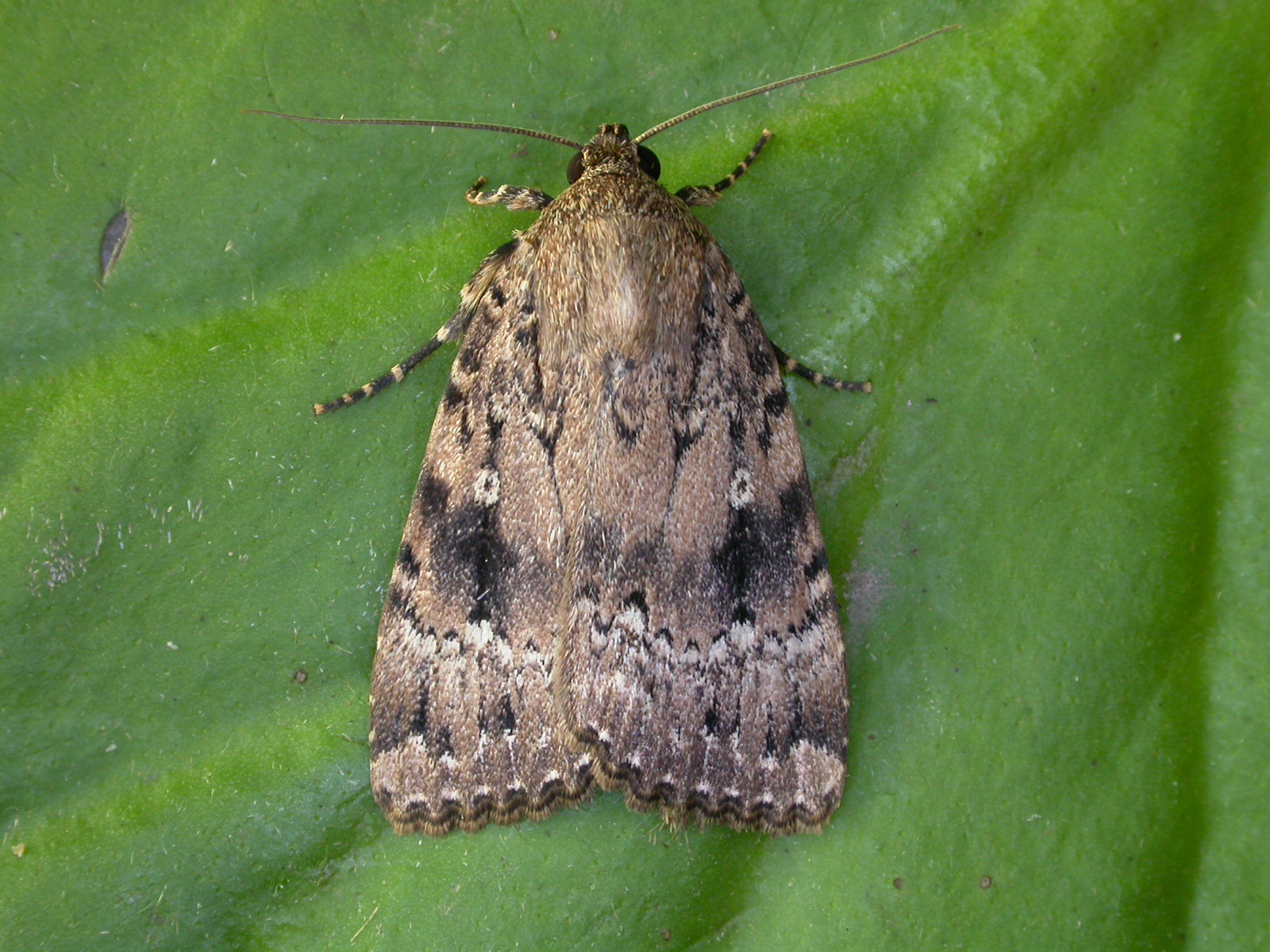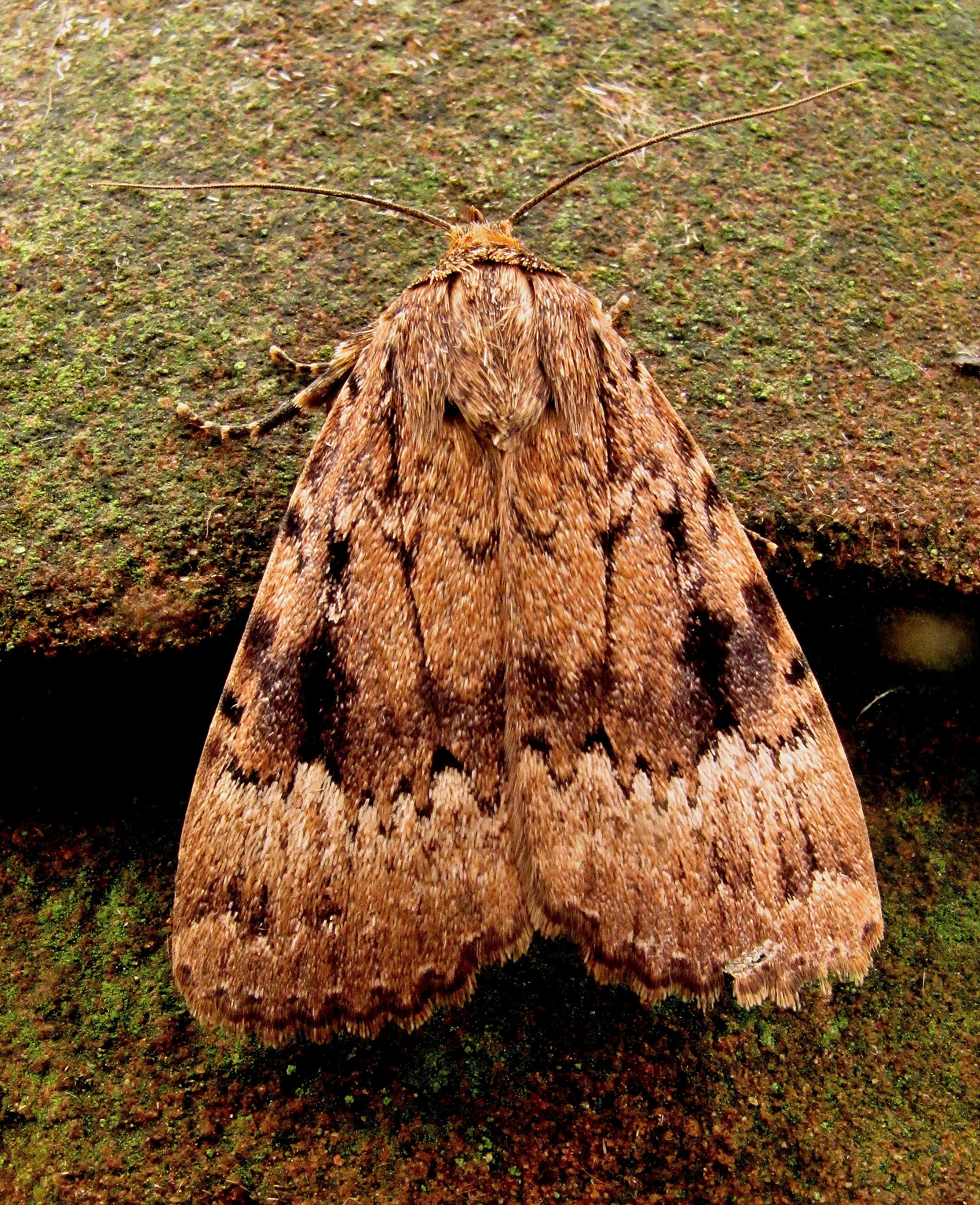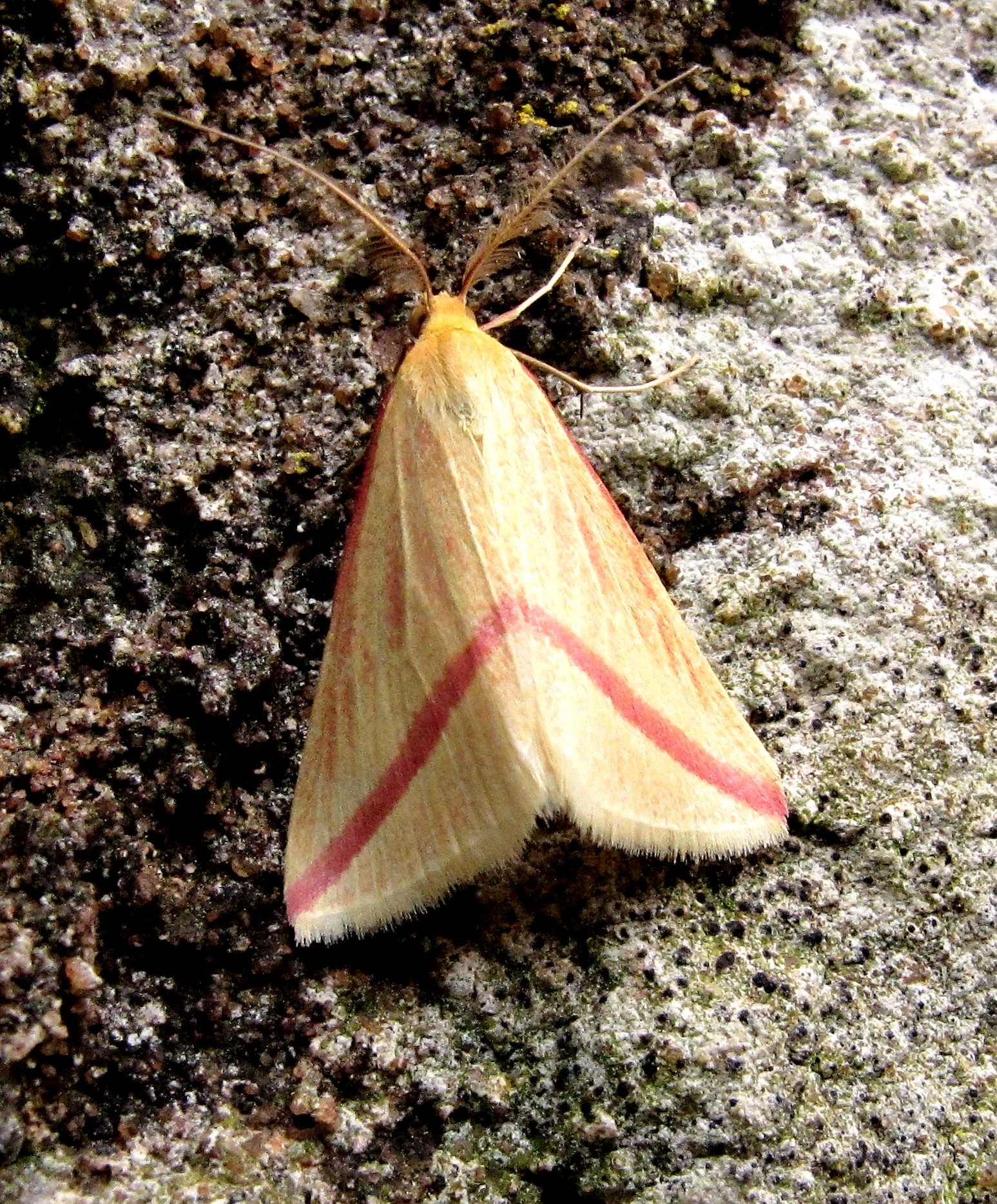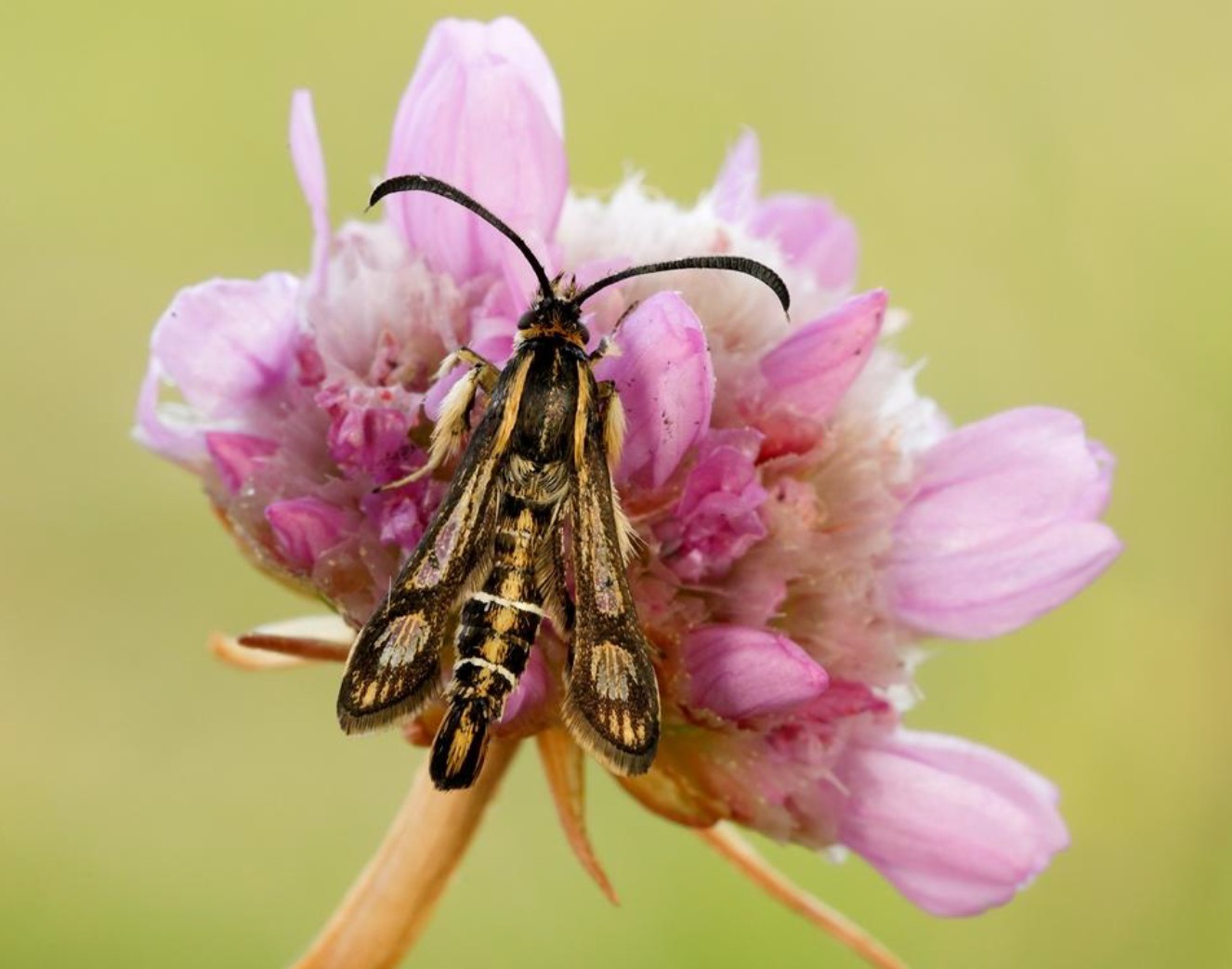Into September and the light trap is full of relatively few autumnal moths which are replacing the myriad of species found so recently in high summer. One woodland moth which always attracts attention is the large Copper Underwing – usually easy to spot amongst the other moths coming to a light trap at this time of year. However, it is one of a pair of species the other one being Svensson’s Copper Underwing first described as a full species only in the 1960’s. Separating the two is difficult as endless analysis of the forewing patterns and marking have shown that there are no clear cut differences. The most consistent are the two ‘v’ shaped marks near the base of the wing which are equal sized in the Copper Underwing (as picture below) with the one nearest the edge being longer in Svensson’s Copper Underwing!
To be certain of which species you have requires more drastic action. The currently accepted difference between the two, using external features, is in the underside of the hind wing. To see this clearly requires grabbing the moth’s thorax between finger and thumb and holding it firmly enough to spread the wings on one side and look at the hind wing from beneath. Like many other species of this size Copper Underwings are expert as wriggling out of your grasp leaving masses of scales behind. However, like many things it is a knack and perfectly possible to do without harming the moth in any way. The trailing edge of the wing is copper coloured in the Copper Underwing before a dark band across the wing and a pale, creamy base to the wing. In Svensson’s the copper colour extends beyond the less pronounced band and the rest of the wing is dirty grey. However, seeing these differences depends on how fresh the moth is as well as how dextrous the observer is! Getting a usable photo requires two people!!
The separation of the two species is based on killing the moth and looking at the genitalia and the fairly distinct differences in both males and females. Even the caterpillars look similar being bright green with a series of white lines along their length and a ‘humped’ last segment. However, in the final instar the Copper Underwing has a yellow tip to this hump and Svensson’s has a red spike.
Both species are widespread in England and Wales but in Scotland their distribution is different. The Copper Underwing has been found as far as the Central Belt and is most widespread to the west in Ayrshire and D&G whereas Svensson’s Copper Underwing already extends to Perthshire and Aberdeenshire and is widespread in the Borders. In D&G we have 99 records of the Copper Underwing but only 10 records of Svensson’s. Of these, 9 of the Copper Underwings were identified from their genitalia but only another 6 had their hind wings checked. Of the Svensson’s only 1 is recorded as being checked by its genitalia so it is possible that there have been some misidentifications.
This is a beautiful woodland moth cryptically coloured and living in woods with oak and honeysuckle (the larval food plants). It readily comes to light or to tree sap or a sugar-based lure. Our records are from the end of July to mid October with most records about now. If you find one do try and get a clear identification using the hind wing ‘method’ otherwise the record should go down as Copper Underwing agg.





